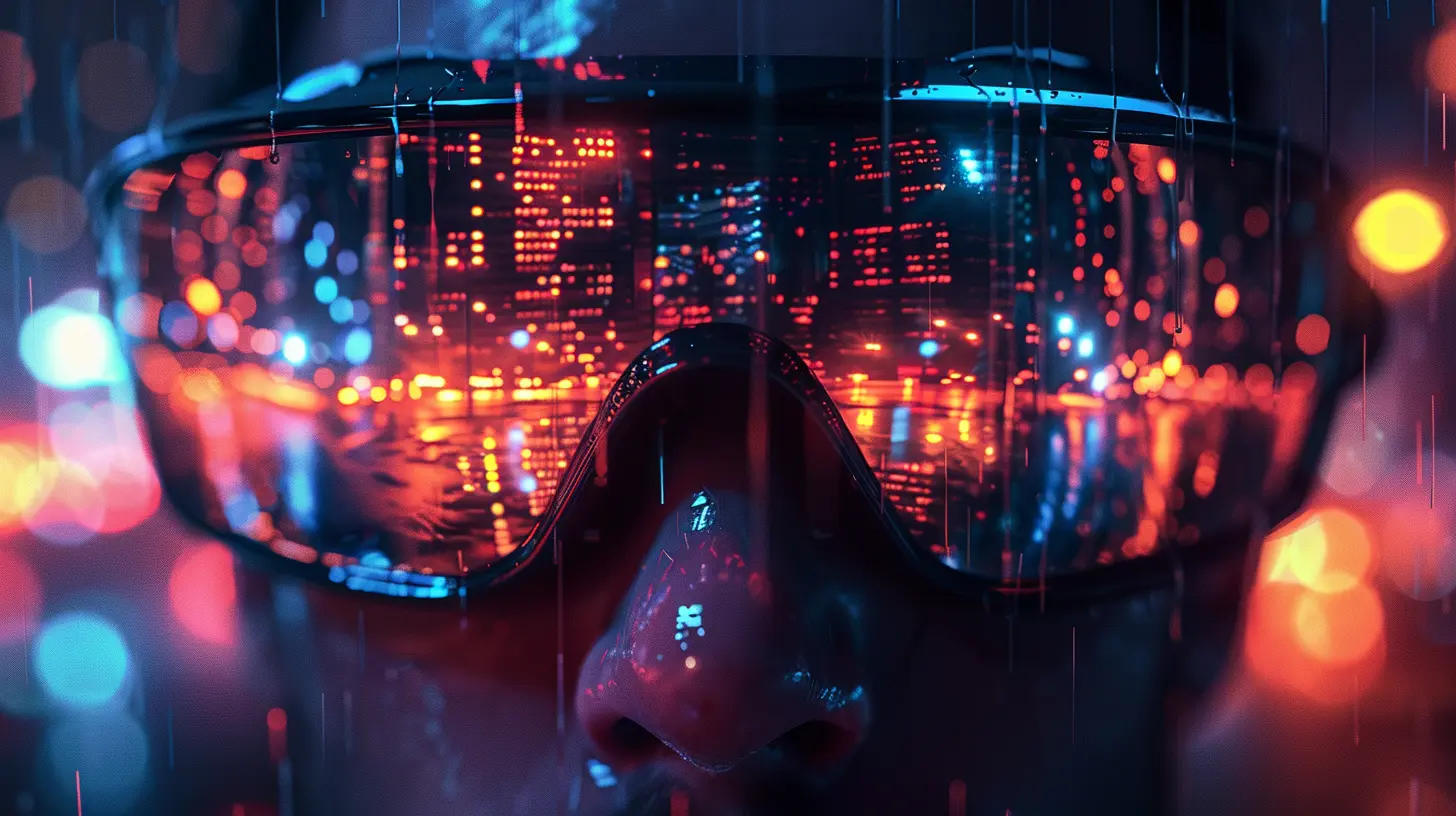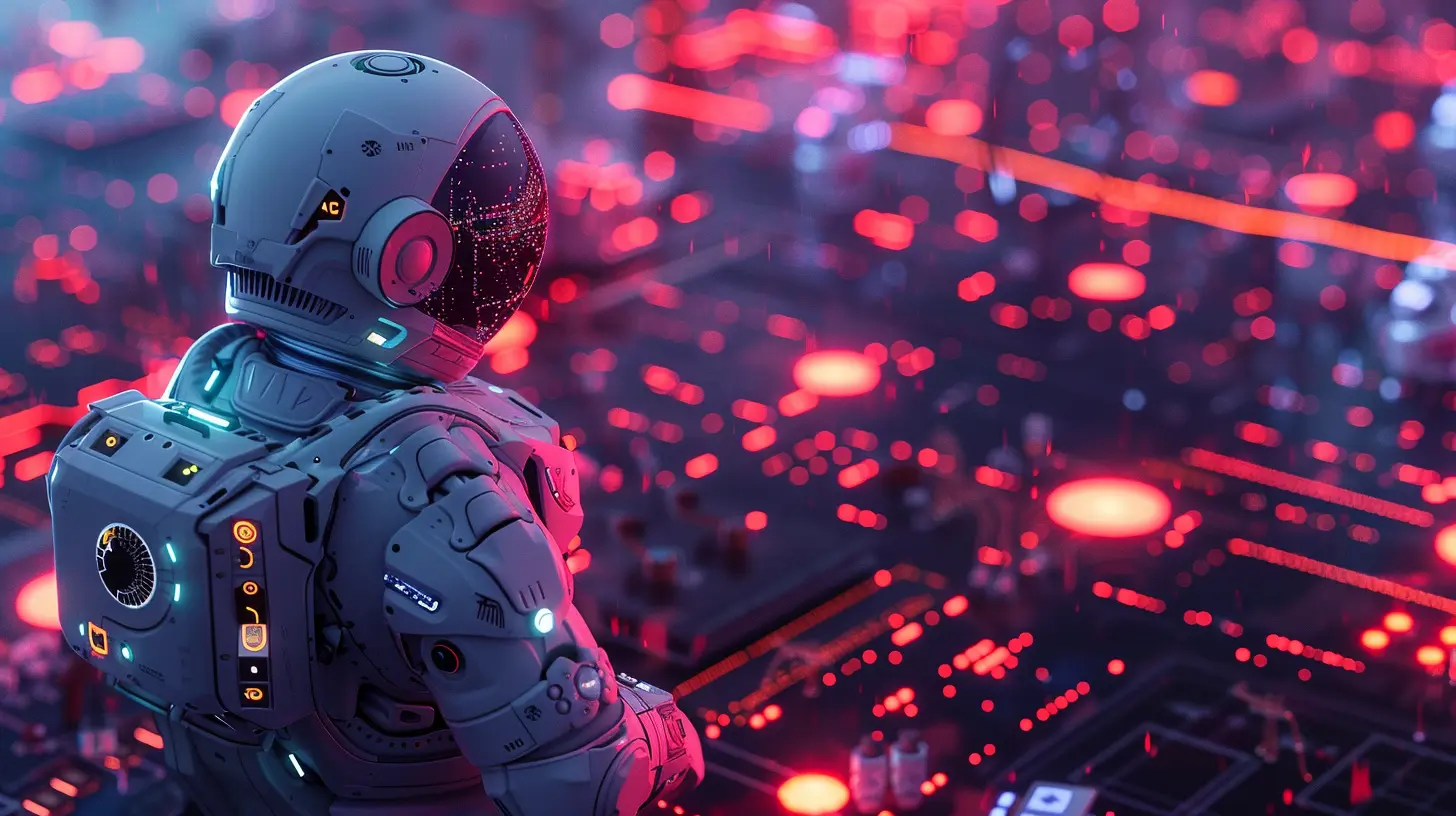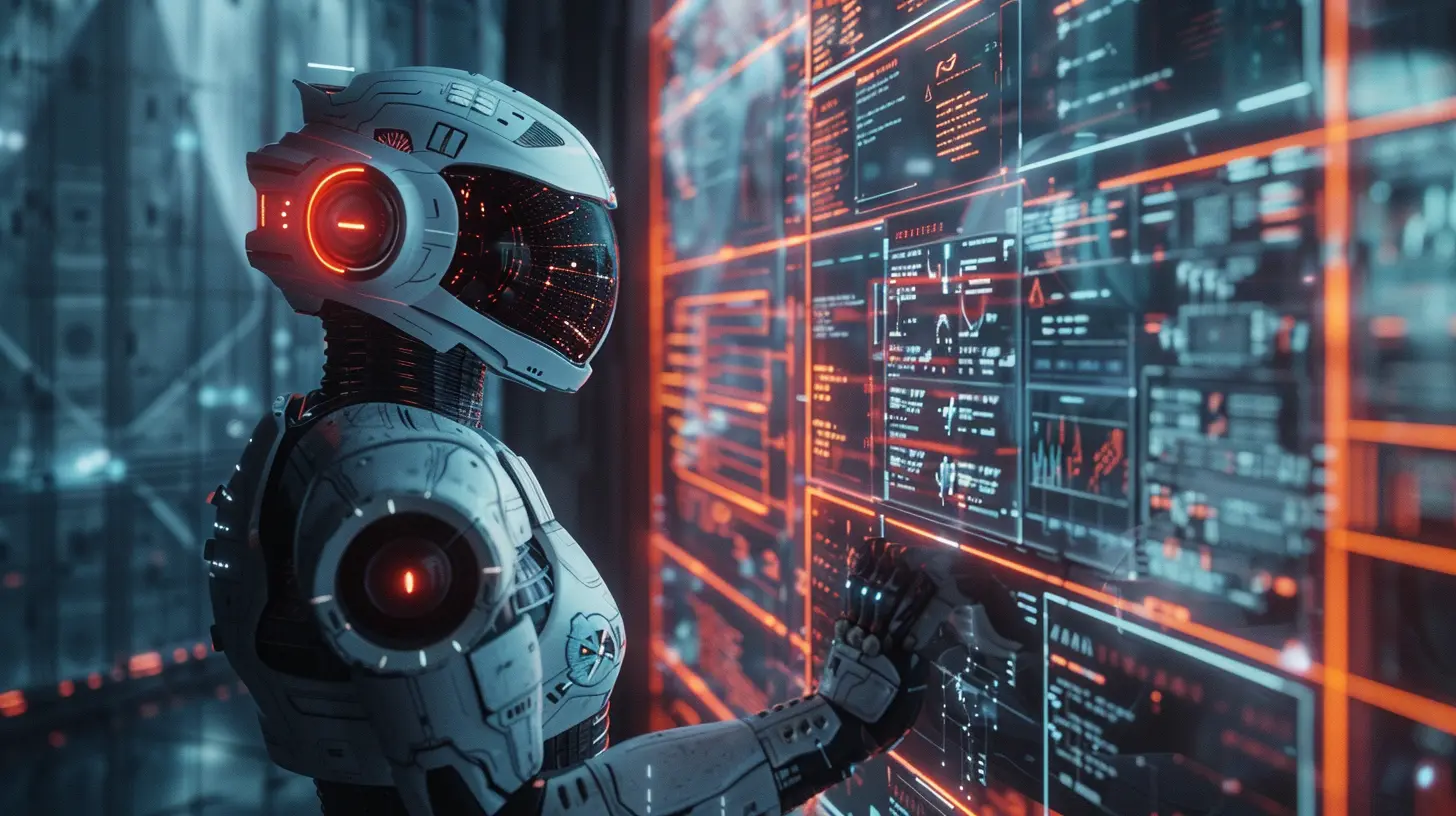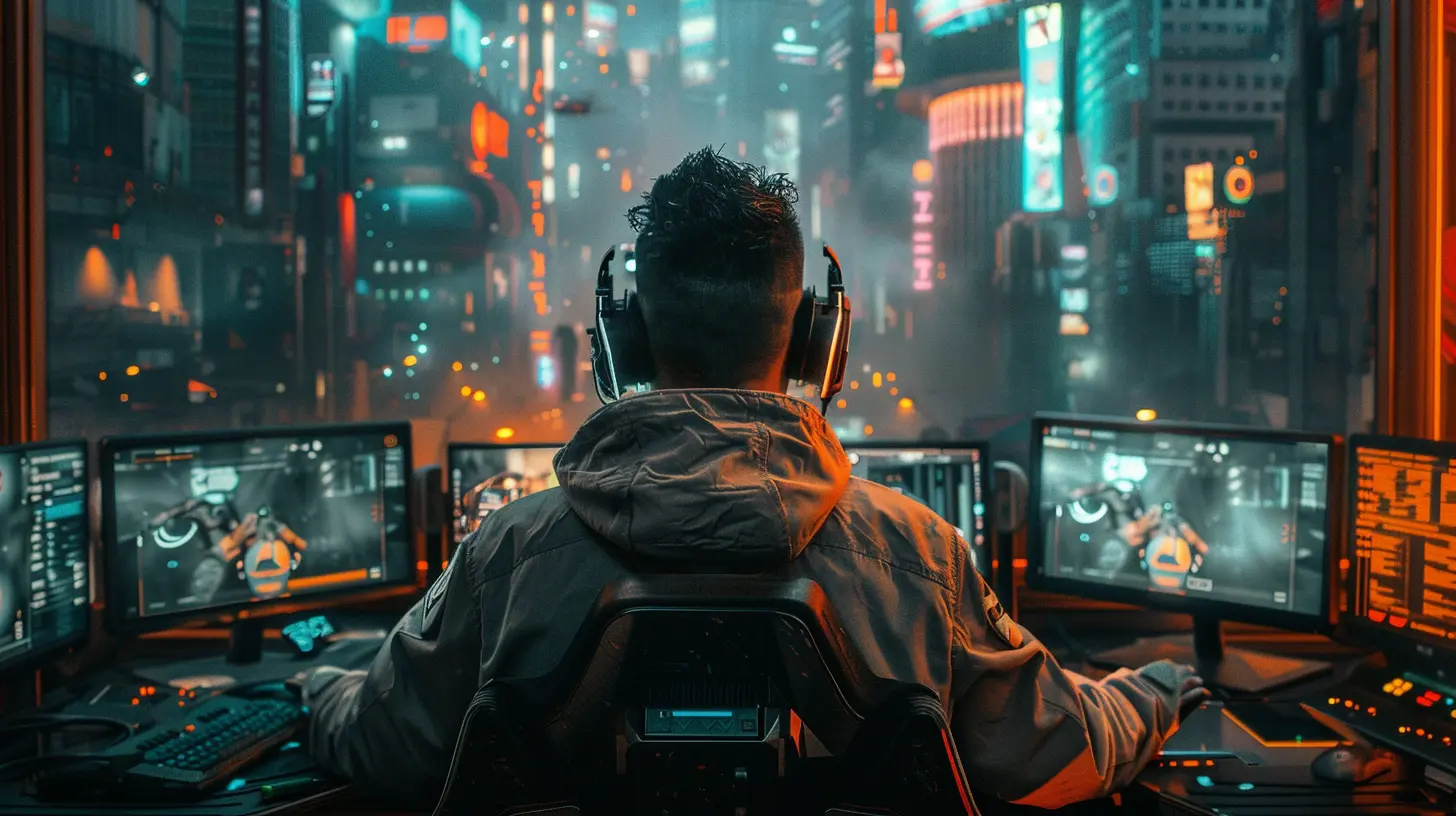How AI is Revolutionizing Game Development
22 June 2025
Video games have come a long way since the days of pixelated characters hopping across a flat screen. Today, gaming is an immersive and dynamic experience, with sprawling open worlds, lifelike characters, and gameplay mechanics that respond intelligently to player actions. But what’s behind this seismic shift? The answer lies in Artificial Intelligence (AI).
AI isn’t just some buzzword thrown around in tech circles—it’s a game-changer (pun intended) for game developers everywhere. With the help of AI, games are becoming more realistic, engaging, and innovative than ever before. So, how exactly is AI revolutionizing game development? Let’s dive deep into this fascinating topic.
What Is AI in Game Development?
Before we get into the nitty-gritty, let’s talk about what AI actually means in the context of game development. At its core, AI in games refers to the use of algorithms and machine learning to create intelligent and responsive behaviors in both non-playable characters (NPCs) and the game environment. Think of it as a virtual brain that helps games simulate human-like interactions and decision-making processes.From powering smarter enemies in first-person shooters to generating entire game worlds procedurally, AI is woven into the fabric of modern gaming. And unlike traditional coding, which relies on fixed scripts and behaviors, AI enables adaptive systems that can learn, evolve, and surprise players in unexpected ways.
Smarter NPCs: Making Games Feel Alive
Let’s face it—nothing kills the vibe of an intense game more than dumb NPCs. You know the ones I’m talking about: enemies who mindlessly march toward their doom or allies who can’t navigate around a rock. AI is flipping the script on this.Modern NPCs are no longer just cardboard cutouts—they’re becoming smarter, more dynamic, and, dare I say, even a bit cunning. With AI, NPCs can now adapt to player behavior. For example, in stealth games, enemies might notice footprints or become more alert if they spot a shadow moving.
Games like The Last of Us Part II have been praised for their AI-powered NPC behaviors. Enemies don’t just charge blindly at you; they strategize, call for reinforcements, and even react emotionally when a comrade falls. This level of realism pulls you deeper into the game, making every encounter feel personal and intense.
Procedural Content Generation: Infinite Possibilities
Picture this: you’re wandering through a massive open-world game where every tree, mountain, and village feels unique. How do developers create such vast, intricate landscapes without spending decades on them? You guessed it—AI.Procedural Content Generation (PCG) is one of the most exciting applications of AI in game development. Instead of manually designing every single element, developers use algorithms to generate content on the fly. Games like Minecraft, No Man’s Sky, and Spelunky use PCG to create endless possibilities, ensuring no two playthroughs are ever the same.
But it’s not just about landscapes. AI-driven PCG can create quests, storylines, and even dialogue. Imagine playing a game where your choices shape unique missions tailored specifically to your playstyle. Sounds pretty cool, right?
Better Game Testing: Squashing Bugs Faster
Let’s be honest—nobody likes bugs. Whether it’s falling through the map or encountering a quest that won’t progress, glitches can ruin an otherwise amazing game. Thankfully, AI is lending a hand (or, more accurately, a neural network) to make game testing faster and more efficient.Traditionally, game testing was a painstaking process done by human testers. While still important, human testing has its limitations—it’s time-consuming, repetitive, and error-prone. AI, on the other hand, can simulate thousands of gameplay hours in a fraction of the time. It can analyze patterns, identify bottlenecks, and even suggest fixes for common bugs.
By automating the grunt work, AI frees up developers to focus on crafting better games instead of getting bogged down in debugging.
Personalized Gaming Experiences: Tailored Just for You
Ever feel like a game was made just for you? That’s AI at work. Personalization is a growing trend in game development, and AI is the driving force behind it.Take role-playing games (RPGs), for instance. AI algorithms can analyze your choices, playstyle, and preferences to adapt the game accordingly. Maybe you prefer sneaky tactics over going in guns blazing. The game might present you with stealth-focused missions, weapons, and upgrades. Or perhaps you’re into exploring every nook and cranny—AI can generate hidden secrets and Easter eggs that cater to your curiosity.
Think of it like a virtual dungeon master, constantly tweaking the experience to keep you engaged. It’s this personalized touch that makes modern games feel truly immersive.
Advanced Graphics and Animation
Graphics and animation are another area where AI is making waves. Machine learning is enabling developers to create hyper-realistic visuals and fluid animations without costing an arm and a leg. AI can analyze motion capture data, creating lifelike character movements with fewer resources.For example, NVIDIA’s DLSS (Deep Learning Super Sampling) uses AI to enhance game visuals without sacrificing performance. It’s like getting a free graphics upgrade for your PC or console. Additionally, AI can help with texture generation, lighting effects, and even facial animations, making characters feel more human-like.
AI-Driven Storytelling
Storytelling is the heart and soul of many games. But crafting a compelling narrative that resonates with players? That’s no easy task. AI is stepping up to make storytelling more dynamic and interactive.In games like Mass Effect, players influence the outcome of the story through their choices. But what if the story could react even further, creating deeply personal narratives on the fly? AI-driven storytelling does just that, using algorithms to adapt dialogue, plot twists, and character arcs based on your actions. It’s like having a choose-your-own-adventure book that writes itself as you play.
Ethical Considerations in AI-Driven Development
Of course, it’s not all sunshine and rainbows. As AI becomes more prevalent in game development, it raises some tricky ethical questions. For instance, there’s the issue of job displacement. Will advanced AI tools eventually replace human artists, designers, and writers?On the flip side, there’s the potential misuse of AI algorithms to promote predatory monetization tactics, like gambling mechanics or overly aggressive microtransactions. Developers need to strike a balance, ensuring AI enhances the gaming experience without crossing ethical lines.
The Future of AI in Gaming
So, what’s next for AI in game development? If current trends are anything to go by, the future looks incredibly exciting. We’re talking about fully adaptive game worlds, NPCs that can hold real conversations, and AI algorithms that create entire games from scratch.Virtual Reality (VR) and Augmented Reality (AR) are also ripe for AI integration. Imagine playing an AR game where the environment reacts in real-time to your movements and decisions. Or a VR experience where NPCs remember past interactions and adjust their behavior accordingly.
The possibilities are endless, and we’re only scratching the surface of what AI can do.
Wrapping It Up
AI is more than just a buzzword—it’s the secret sauce that’s transforming the gaming industry. From smarter NPCs to procedural worlds, personalized experiences, and beyond, AI is pushing the boundaries of what games can be. It’s not just about making games look better; it’s about making them feel better, creating experiences that are dynamic, immersive, and deeply engaging.Of course, as with any technology, there are challenges to navigate. But if the past few years are any indication, the marriage between AI and game development is only just beginning—and the future promises to be nothing short of extraordinary.
all images in this post were generated using AI tools
Category:
Gaming IndustryAuthor:

Whitman Adams
Discussion
rate this article
2 comments
Ardyn Velez
AI enhances creativity and efficiency in game development.
August 26, 2025 at 2:46 PM

Whitman Adams
Thank you! AI truly is transforming game development, streamlining processes and unlocking new creative possibilities for developers.
Aria Velez
Great insights! AI truly enhances creativity in game development.
June 22, 2025 at 2:34 AM

Whitman Adams
Thank you! I'm glad you found the insights valuable. AI is indeed a game changer in unlocking new creative possibilities!


